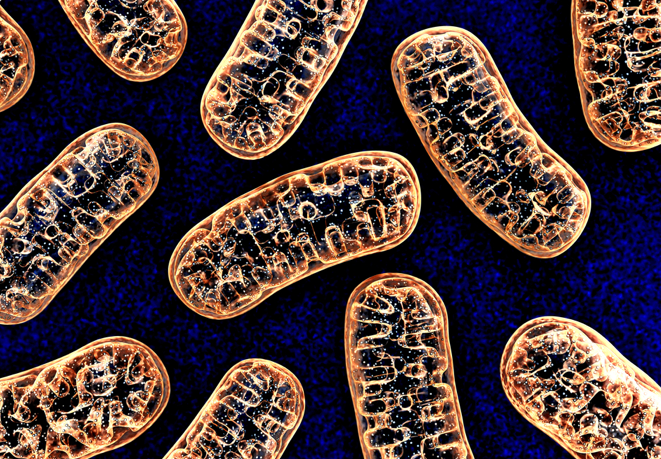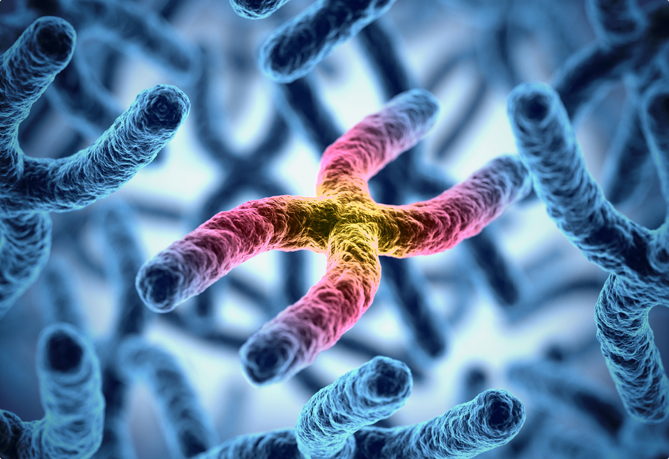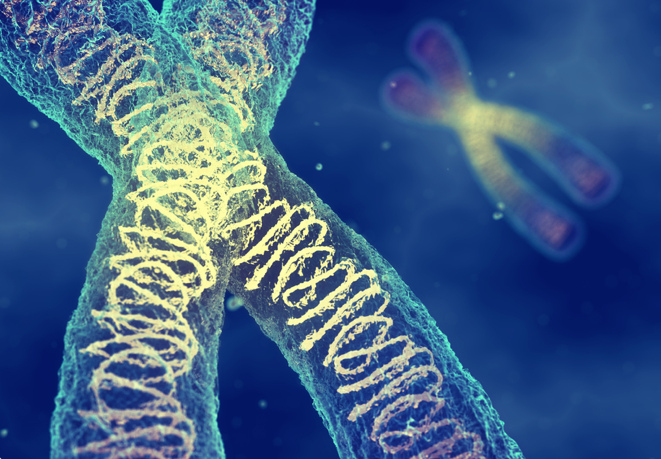Whole Genome Sequencing
BioneGenome
Whole-genome sequencing (WGS) is an extensive method for analyzing entire genomes, which identifies the defect in a patient's DNA. It provides a wide range of information about thousands of genes involved in growth, nutrition, and overall well being. With the NGS technology, WGS is one of the sought after genetic tests which can identify the root cause of the disease. Both the coding as well as non-coding part of the genome will be sequenced in this test. Although coding sites of the genome account for only 1% to 2%, clinical data has shown that non-coding variants also play a significant role. With the reduced cost of WGS, it has become one of the most realistic approaches in DNA testing.

WES- Whole Exome Sequencing
BioneXome
Genetic diseases at times are associated with complex symptoms and the clinician finds it very difficult to give a conclusive diagnosis. In such cases treatment becomes time-consuming, challenging and costly, which adversely affects the patient's quality of life. Whole exome sequencing is a target-oriented approach where genomic technique is used to sequence the entire protein-coding region of the genes. The test is divided into 2 steps, first, the targeted protein-coding region is selected. Following that, the exonic DNA is sequenced. The goal of this test is to identify the variants present in the protein-coding region, as 85% of the disease causing variants are present in exon. Here in Bione, this test is cost-effective, will cover both single and polygenic disorders with best quality and accuracy.

Bione MITO
Mutation in the mitochondrial DNA causes mitochondrial disease, it occurs when mitochondria is unable to produce sufficient energy for the cell, it has a high mutation rate, approximately 100 times that of the nuclear genome. Mitochondrial diseases occur at an estimated frequency of 1:2000 to 1:5000 in individuals, making it one of the most common genetic diseases. Common examples can be metabolic disorders. Bione has come up with an extensive testing option which can help an individual to avail different treatment options and delay the progression of the disease. People with complex neurological features, metabolic disorders, children with lactic acidosis and at-risk family members can opt for this test.

BioneArrayCyto 750K
This test is used to identify the extra or missing chromosomal segment called copy number variation. It uses 7,50,000 markers for copy number analysis. It detects microdeletion, abnormalities of chromosomes, unbalanced rearrangement of chromosome structure, mosaicism of greater than 20 to 25% and >5 Mb of LOH (loss of heterozygosity). It gives the most comprehensive whole-genome coverage with high performance and sensitivity. It is specifically used for individuals who don't fit for any specific syndrome, for example, patients with:

| Markers for copy number analysis | |
|---|---|
| Markers for copy number analysis | 750,436 |
| Number of non polymorphoc Markers | 550,000 |
| Number of SNP markers | 750,436 |
| Total number of “geneotype-able” SNP markers |
2,000,436 |
| Genome Build | Hg19 |
| Autosomal markers | 702,346 |
| Number of non polymorphoc Markers | 2,000,436 |
| Pseudoautosomal markers | 811 |
| Intragenic markers | 532,850 |
| Intergenic markers | 217,586 |
| Average marker spacing (basic pairs) | |
|---|---|
| Intragenic (within all the genes below) | 1,737 |
| Intergenic (non-gene backbone) | 6,145 |
| Overall (gene and non-gene backbone) | 4,125 |
| Percentage of genes covered (25 markers/100kb) |
|
| ClinGen (formerly ICCG & ISCA) (3483) | 100% |
| Cancer genes (526) | 100% |
| OMIM genes (3,483) | 83% |
| X chromosome OMIM Morbig genes (177) | 93% |
| RefSeq genes (36,121) | 80% |
| DDD11 (1309) | 80% |
BioneArrayCyto HD
This test is designed for analyzing chromosomal aberrations to provide unparalleled coverage with a hybrid dual design which gives best of copy number probes, high-density SNPs, high-resolution loss/absence of heterozygosity (LOH/AOH), enhanced detection of low-level mosaicism. It has greater than 99% sensitivity and it uses 2.67 million markers for copy number analysis. This is particularly useful when karyotype and other targeted molecular genetic tests have failed to yield a diagnosis, and follows an unusual course, with multiple conditions and overlapping features of the patient. This test can be combined with WGS/WES, when a patient's medical history and physical features strongly suggest an underlying genetic etiology. At times patients have evaluation based on multiple genetic tests but lack of etiology. Therefore, a combination of this test with WES/WGS can accelerate and save time for the diagnosis.
This test can be ordered in cases of:

| Markers for copy number analysis | |
|---|---|
| Total number of probes | 6,876,796 |
| Number of non-polymorphic markers | 1,953,246 |
| Number of SNP markers | 743,304 |
| Total number of “geneotype-able” SNP markers |
2,000,436 |
| Genome Build | Hg19 |
| Autosomal markers | 2,491,915 |
| Pseudoautosomal markers | 1,410,535 |
| Intragenic markers | 1,410,535 |
| Intergenic markers | 1,286,015 |
| Average marker spacing (basic pairs) | |
|---|---|
| Intragenic (within all the genes below) | 880 |
| Intergenic (non-gene backbone) | 1,737 |
| Overall (gene and non-gene backbone) | 1,148 |
| Percentage of genes covered (25 markers/100kb) |
|
| ClinGen (formerly ICCG & ISCA) (3483) | 100% |
| Cancer genes (526) | 100% |
| OMIM genes (3,561) | 100% |
| X chromosome OMIM Morbig genes (177) | 100% |
| RefSeq genes (36,121) | 98% |
| DDD11 (1309) | 98% |

 Contact Us
Contact Us Whatsapp
Whatsapp